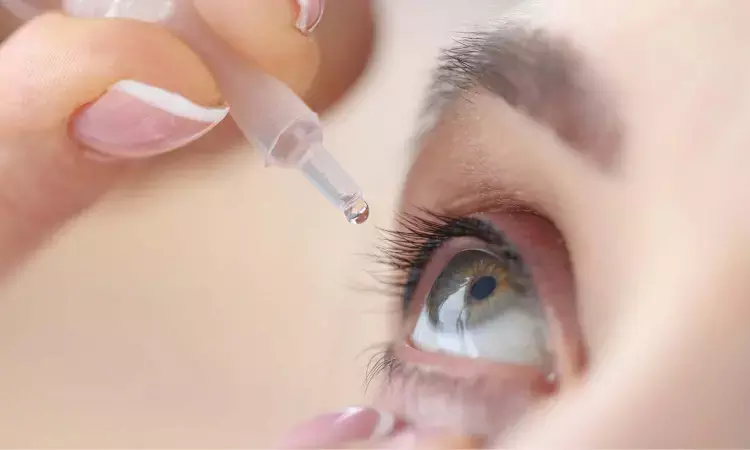- Home
- Medical news & Guidelines
- Anesthesiology
- Cardiology and CTVS
- Critical Care
- Dentistry
- Dermatology
- Diabetes and Endocrinology
- ENT
- Gastroenterology
- Medicine
- Nephrology
- Neurology
- Obstretics-Gynaecology
- Oncology
- Ophthalmology
- Orthopaedics
- Pediatrics-Neonatology
- Psychiatry
- Pulmonology
- Radiology
- Surgery
- Urology
- Laboratory Medicine
- Diet
- Nursing
- Paramedical
- Physiotherapy
- Health news
- Fact Check
- Bone Health Fact Check
- Brain Health Fact Check
- Cancer Related Fact Check
- Child Care Fact Check
- Dental and oral health fact check
- Diabetes and metabolic health fact check
- Diet and Nutrition Fact Check
- Eye and ENT Care Fact Check
- Fitness fact check
- Gut health fact check
- Heart health fact check
- Kidney health fact check
- Medical education fact check
- Men's health fact check
- Respiratory fact check
- Skin and hair care fact check
- Vaccine and Immunization fact check
- Women's health fact check
- AYUSH
- State News
- Andaman and Nicobar Islands
- Andhra Pradesh
- Arunachal Pradesh
- Assam
- Bihar
- Chandigarh
- Chattisgarh
- Dadra and Nagar Haveli
- Daman and Diu
- Delhi
- Goa
- Gujarat
- Haryana
- Himachal Pradesh
- Jammu & Kashmir
- Jharkhand
- Karnataka
- Kerala
- Ladakh
- Lakshadweep
- Madhya Pradesh
- Maharashtra
- Manipur
- Meghalaya
- Mizoram
- Nagaland
- Odisha
- Puducherry
- Punjab
- Rajasthan
- Sikkim
- Tamil Nadu
- Telangana
- Tripura
- Uttar Pradesh
- Uttrakhand
- West Bengal
- Medical Education
- Industry
Botulinum Toxin A Injections Show Significant Benefits in Dry Eye Disease: Study

Taiwan: Researchers have found in a new study that Botulinum toxin A treatment significantly improved tear breakup time, tear meniscus height, and Schirmer test scores in patients with dry eye disease. Additionally, patients reported notable symptom relief as measured by the Ocular Surface Disease Index. According to Dr. Lawrence Nguyen, these findings highlight botulinum toxin A as an effective therapy for enhancing tear production, stability, and overall symptom management in dry eye patients.
The study, published in the Eye Journal, was led by Dr. Chi-Ming Chan from the School of Medicine at Fu Jen Catholic University, Taiwan. The research team conducted a comprehensive systematic review and meta-analysis to evaluate the therapeutic potential of Botulinum toxin A (BTX-A) in treating dry eye disease (DED)—a multifactorial condition marked by tear film instability, ocular inflammation, and neurosensory dysfunction.
To assess the efficacy of BTX-A, the researchers reviewed literature from multiple major databases, including PubMed, Cochrane Library, Web of Science, Scopus, and Embase, covering studies published up to December 2024. They included both randomized controlled trials and non-randomized studies that investigated the effects of BTX-A on dry eye parameters such as tear breakup time (TBUT), Schirmer test scores, tear meniscus height (TMH), and Ocular Surface Disease Index (OSDI) scores.
A total of 14 studies involving 634 patients were included in the analysis, which led to the following key findings:
- Pooled data from 10 studies involving 513 participants showed significant improvements in clinical outcomes following Botulinum toxin A (BTX-A) treatment.
- Tear breakup time (TBUT), indicating tear film stability, increased by 1.79 seconds.
- Schirmer test scores, used to evaluate tear production, improved by 3.72 mm.
- Ocular Surface Disease Index (OSDI) scores, reflecting patient-reported symptoms, decreased by 7.51 points.
- Tear meniscus height (TMH), representing tear volume, increased by 0.10 mm.
- All improvements were statistically significant.
- BTX-A is believed to relieve symptoms by modulating neurosensory pathways and reducing excessive blinking or muscle spasms.
- These effects help enhance tear film retention and protect the ocular surface.
The analysis also accounted for study variability by using both fixed- and random-effects models, ensuring the robustness of results despite differences in study designs and populations.
The authors wrote, "Given the growing prevalence of dry eye disease worldwide—often exacerbated by screen use, aging, and environmental stressors—these findings offer strong evidence for incorporating BTX-A into clinical practice."
"While further large-scale studies are encouraged to establish optimal dosing and injection protocols, the current evidence supports BTX-A as a promising and effective intervention for improving tear function and relieving symptoms in patients with dry eye disease," they concluded.
Reference:
Chen, K., Chan, H., & Chan, C. (2025). Is Botulinum toxin A effective in treating dry eye disease? A systematic review and meta-analysis. Eye, 39(8), 1457-1464. https://doi.org/10.1038/s41433-025-03790-6
Dr Kamal Kant Kohli-MBBS, DTCD- a chest specialist with more than 30 years of practice and a flair for writing clinical articles, Dr Kamal Kant Kohli joined Medical Dialogues as a Chief Editor of Medical News. Besides writing articles, as an editor, he proofreads and verifies all the medical content published on Medical Dialogues including those coming from journals, studies,medical conferences,guidelines etc. Email: drkohli@medicaldialogues.in. Contact no. 011-43720751


